Friday
I left Austin last night traveling through Chicago before arriving in London. Upon arrival, I became aware that hundreds of passengers had been stranded at Heathrow. Everyone was staring at airport monitors which read only two things for both arriving and departing flights - "delayed" or "canceled." As I walked through the airport I could hear the sound of desperation as raised voices echoed throughout. Apparently, many would be stuck at the airport overnight and probably miss connecting flights. I was lucky I guess, I had 3 1/2 hours before my next flight to Casablanca and hopeful any delay would work itself out before then. I just had to make myself comfortable and wait.
After 2 hours of tossing and turning, I decided to try and find the project director who was also going through Heathrow. I had planned on meeting her on the flight to Casablanca but since I had time, I thought I would wander around and see if I could find her. As I wandered through the terminal, I was amazed at the poor condition this terminal at Heathrow was in. The paint was peeling from walls, restrooms smelt as if they had not been cleaned in weeks and there were few monitors listing arrival or departure times. Even when I asked specific questions I was never given sufficient details. Inquiries were merely treated as inconveniences and I was directed away from the counter to someone else. Eventually, I found the project director waiting patiently, still working on logistics for the project. About an hour later our departure gate was finally listed and we headed to our plane.
As we waited on the tarmac for the lineup of planes due to all the delays congestion to clear, I struck up a conversation with a fellow passenger. What drew my attention was the title of an article he was typing away on his laptop. It read, "Afghan Gold." His name was Tahir Shah. Tahir was a British travel writer living in Morocco who has worked with various organizations including National Geographic and the Discovery Channel.
Tahir had recently completed a project that was to air on the National Geographic channel regarding the search for a missing city in Peru. What caught my eye though was a proposal his was writing to National Geographic regarding a project in Afghanistan. According to Tahir, a treasure, worth an estimated $530 billion, belonging to a powerful Shah from Persia that had been en route from India was taken when a General in the Shah's army turned rogue and hid the treasure in Afghanistan before being killed. Tahir related that the treasure had never been located and still remains hidden to this day. What I questioned was how it could not have already been found. With the intense military action that has been going on in the country, it would seem highly unlikely that it could remain hidden. Tahir was undaunted in his belief of its existence and that it would be found. As we talked, our plane finally departed and we traveled most of the way to Casablanca discussing his project.
Upon arriving in Casablanca, we rented a car and drove to Rabat. Rabat is the capital of Morocco and since the project director needed to meet with a Moroccan archaeologist with the Institute National des Sciences d’Archéologie et du Patrimoine (INSAP) to finalize our plans.
Saturday
I was grateful the drive to Rabat didn't take long because I was already starting to fade due to jetlag. When we finally arrived at the Hôtel Siaha Rabat around 9:00 pm I fell fast asleep.
In the morning, we decided that since it was the weekend and all government offices were closed, we would spend the day exploring the city. Our hotel was just across the street from the Hassan Mosque and Tower and made for a perfect beginning.
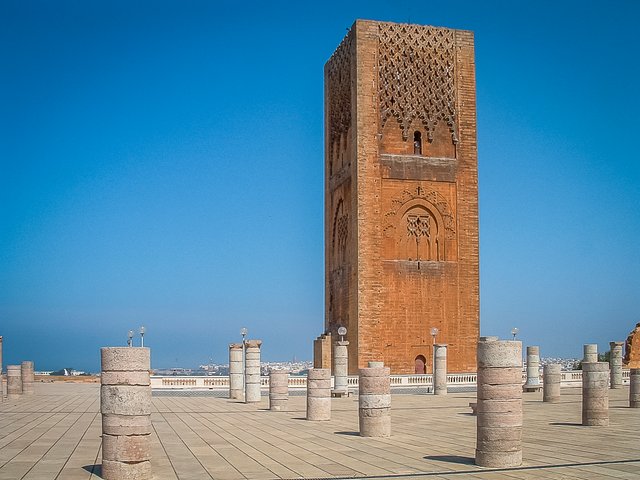
Construction began in 1195, under the orders of Sultan Yaqub al-Mansur who wanted to build the largest minaret and mosque in the world. It was not to be, however and was left unfinished with his death in 1199. These remains were an apparent attempt by this Almohad ruler to make Rabat the new imperial capital. In 1755, much of the mosque was destroyed by an earthquake. Now all that remains is the Hassan Tower and pieces of the columns that would have been used to support the mosque.
Located on the opposite side of the mosque grounds is the Mausoleum of Mohammed V. This mausoleum was commissioned by his son, Hassan II, whose body is also included in the mausoleum. Mohammed V is the grandfather of the current King of Morocco, Mohammed VI.
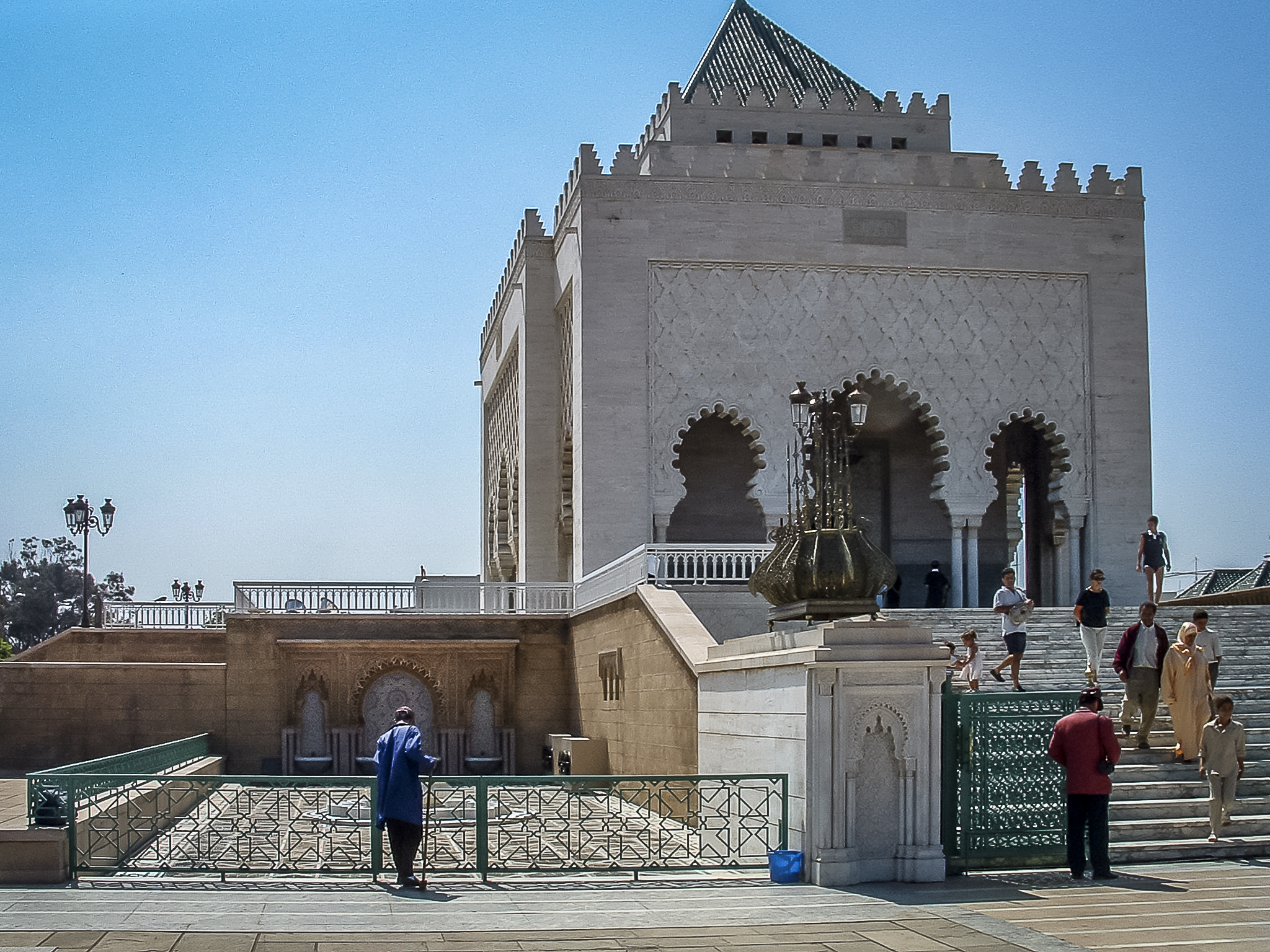
The mausoleum is made of white marble and stands high above the surrounding grounds. Entry is through a wrought-iron door that opens onto a stairway leading to the dome beneath which lies the sarcophagus of Mohammad V. This is a beautiful building lined with tile mosaics across every inch of the walls and ceiling. There are guards at every entrance more than willing to stand for a photo as long as you don't ask them to step out of the archways in which they guard. They must never leave the entrances unguarded.
After leaving the mausoleum, we made our way to a beach running alongside the western edge of Rabat on the Atlantic Ocean. The water was beautiful but very cold. Believe it or not, there were a lot of surfers trying to find that "small" but perfect wave. It seems there is a Rastafarian subculture here and many surfers sported the traditional dreadlocks that make them easy to identify.
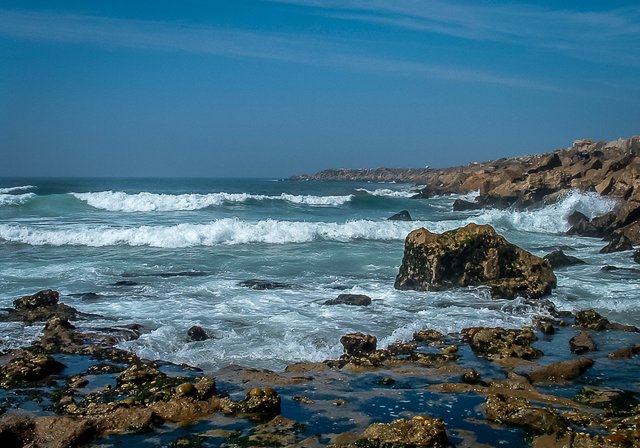
Coming off the beach I noticed a large Muslim cemetery across the street that caught my eye. For anyone who knows me, I am fascinated with cemeteries so this is indeed an appropriate shot.
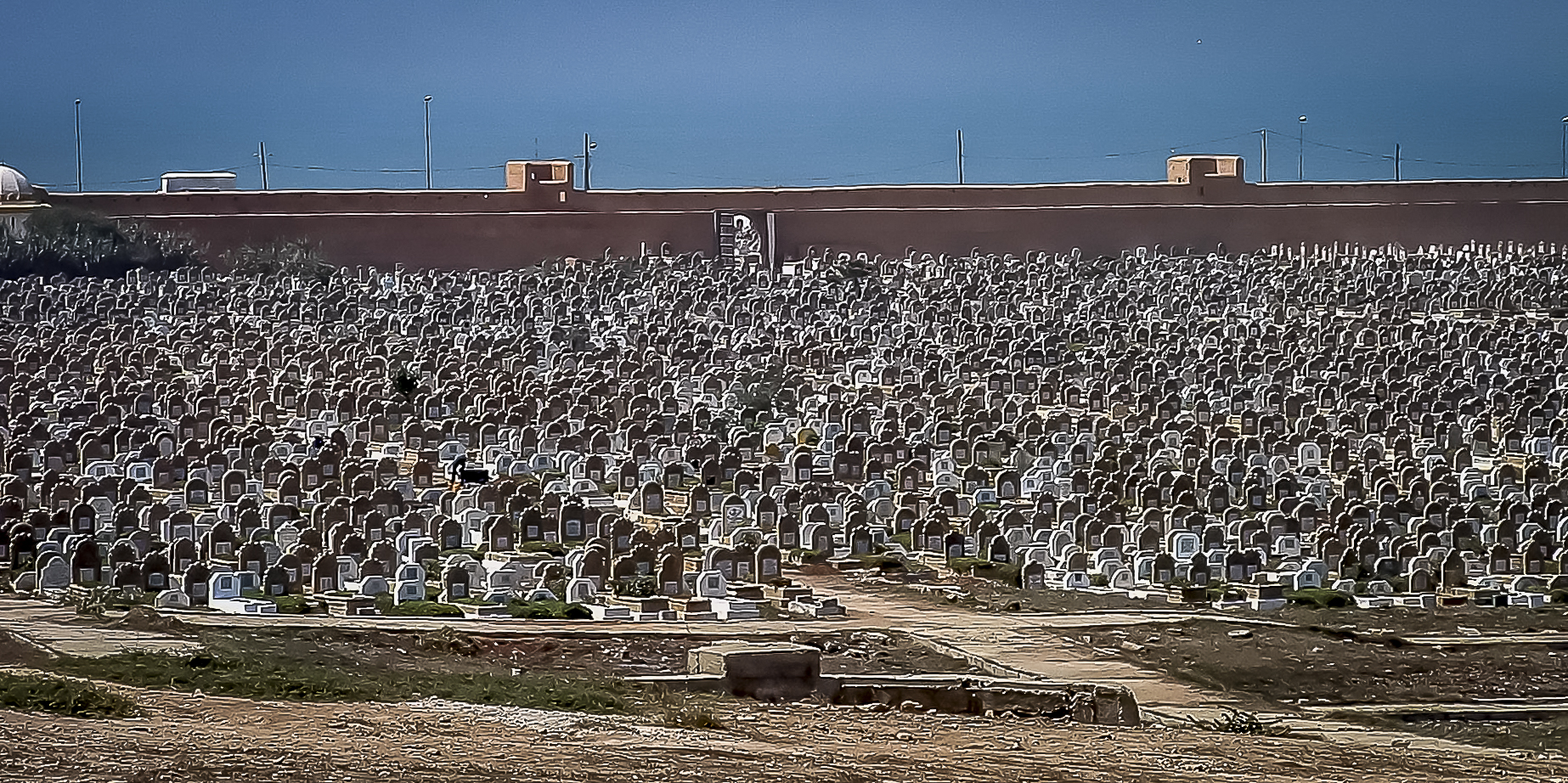
Monday
On our way out to the office of Dr. Elarbi Erbati (INSAP), we stopped at a Roman archaeological site that was of particular interest. This was the site of Chellah Necropolis. Archaeological excavations at Chellah have uncovered the remains of a Roman city known as Sala Colonia. Once a prosperous city, Sala Colonia later declined and by the 10th century had fallen into ruin. Still visible today is the main thoroughfare (decumanus maximus) that crossed all Roman cities from east to west. It led out from Sala Colonia to the port, built in the 1st century BCE but now lies buried beneath the sand.
Built around and on top of Sala, Colonia was the Chellah Necropolis, a more complete set of ruins. This structure was built in the 13th and 14th century by various Muslim builders. The walls of the Chellah Necropolis, which have the ochre tones typical of Rabat, were built on top of the pre-existing Roman walls of Sala Colonia. Situated within the walls of the necropolis are the ruins of the mosque. Many Muslim rulers and their wives are buried here. The last burial dates to 1351 CE. Also, within the walls of the necropolis was a religious institution that functioned simultaneously as a mosque, a center of learning, and a hostel for pilgrims and students. The necropolis was later abandoned and eventually destroyed by the same earthquake in 1755 that affected the Hassan Tower and Mosque. Colonies of storks have now invaded the remains and their nest can be seen high up in the trees and on the large minaret.
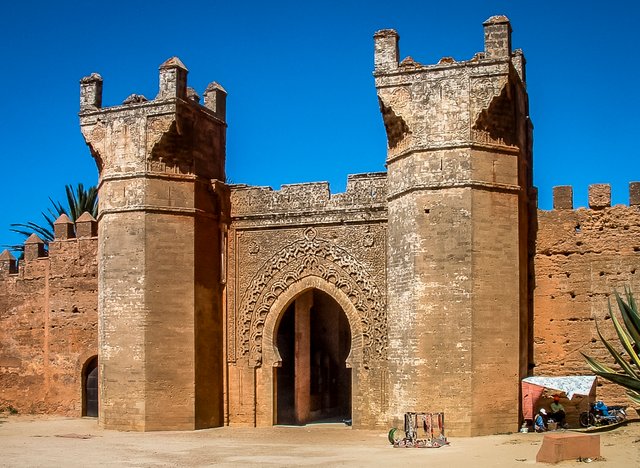
Tuesday
Today, we are in Tangier. This will be our base of operations for the next 8 weeks. We have to first make contact with the American Legation Museum. The Legation has been helping the project as an unofficial liaison and has arranged our hotel at Le Dawliz, which is one of the nicer hotels in Tangier if that says anything. Still, it is clean and comfortable and will work well after the daily grind of fieldwork. At least I can get BBC news.
It now seems that the project will start a little later than expected. We were hoping to start in a few days but because our equipment and boats were shipped to Casablanca instead of Tangier and still need to clear customs, there will be a delay (surprise, surprise). We also have to wait on the Moroccan Gendarme (Moroccan Sheriffs) divers to arrive. These men will represent the Moroccan government and along with Dr. Erbati will be working with us on the project. They are here to keep us safe and report back to their commanders what is happening.
Thursday
As I sit on my balcony at Le Dawliz Hotel in Tangier smoking a Cuban cigar, I can see the lights from Spain shining in the distance. The full moon and the distant planet Mars keep me company. It is well past midnight and the city is very quiet.
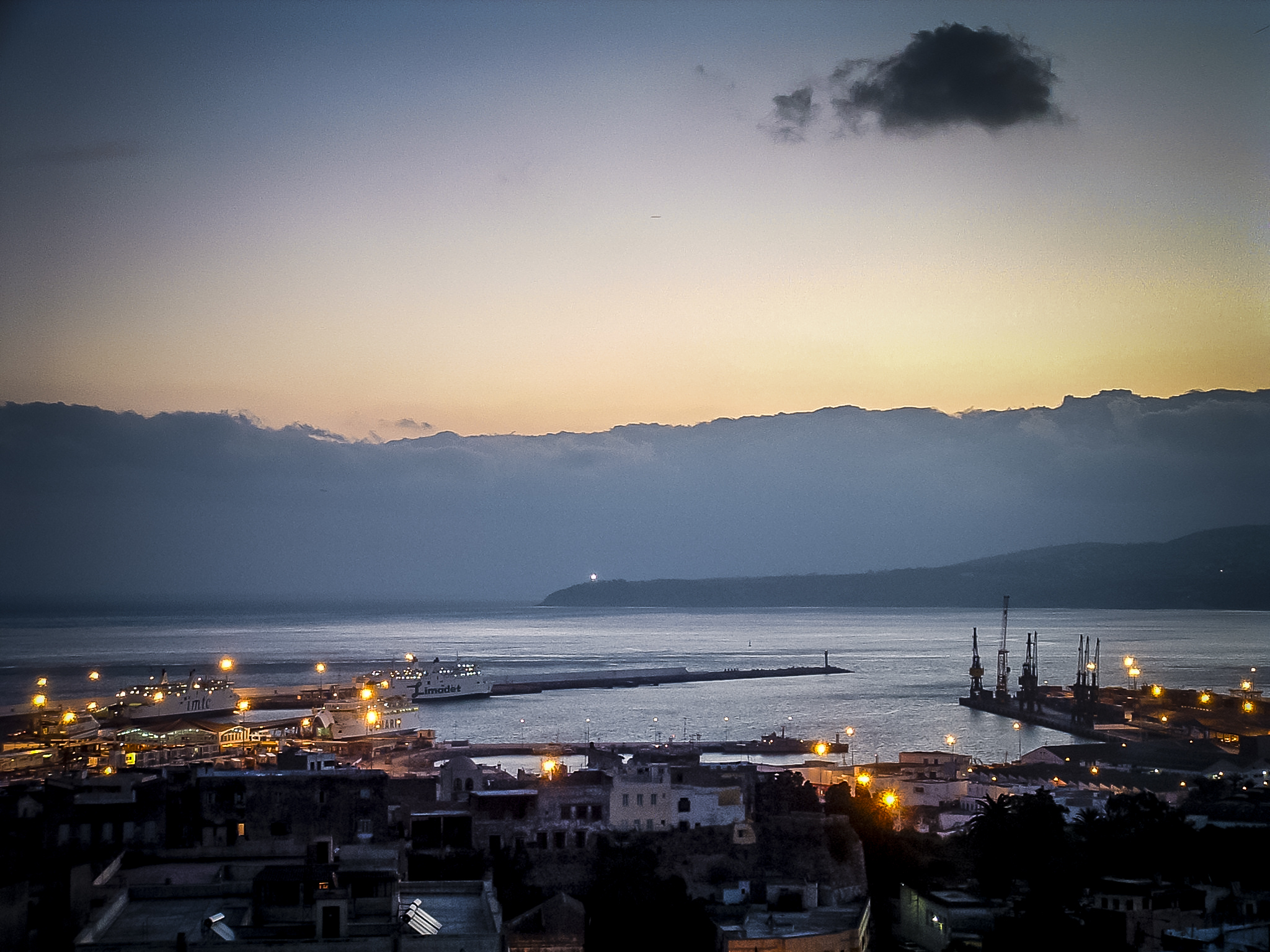
Friday
Today we decided to take a trip out to Cap Spartel. This is very near to where we will be diving and is the most northwestern point on the African continent. Here, you can see the water of the Atlantic coursing through the Straits of Gibraltar and into the Mediterranean. Currents are swift and the water is cold. We will be diving just south of here and it looks like it will be tough.
Cap Spartel is marked by a beautiful lighthouse built in 1865, and on a clear day, you can see all the way to Spain from here.
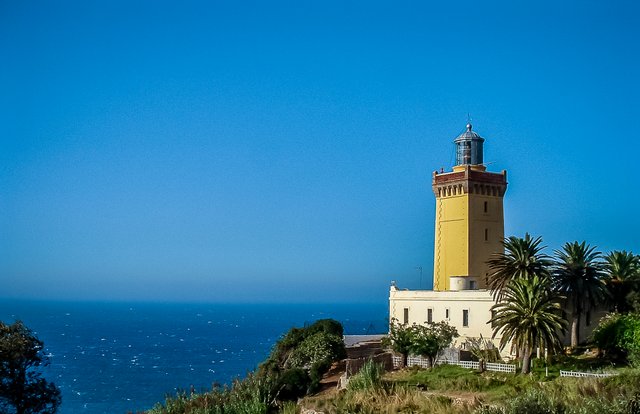
Just south of the lighthouse are the Grottes (caves) of Hercules where the sea has carved out an impressive cave from the cliffs. The opening to the cave, facing out to the sea, is cleft shaped looking like the reversed map of Africa.
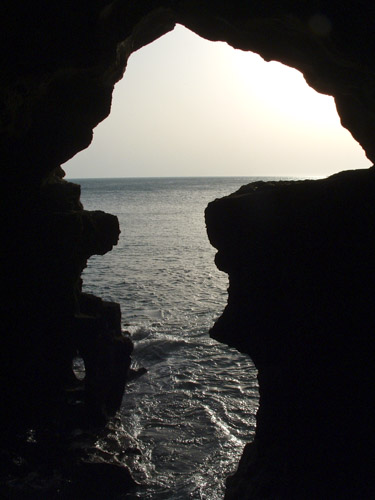
This cave is a major attraction because of its association with Greek mythology. It was here where Hercules sleep before attempting one of his 12 labors. Throughout the cave, you will find various artisans selling their wares, but be careful many are fake and it is difficult to know what is real and what is not. If you decide to buy something make sure you get a good price and don't be too disappointed if it turns out to be worthless.
Saturday
Still having considerable time before diving begins, we decided to head to the Spanish settlement of Ceuta along Morocco's Mediterranean coast. This small Spanish island lies opposite Gibraltar and many consider Ceuta and the Rock of Gibraltar to be the Pillars of Hercules guarding the Mediterranean Sea. There is another location that others consider to be the southern point of this natural gateway. It is a large promontory called Jbel Musa that is visible for miles and could easily be seen from the straits. Ceuta, on the other hand, can only be seen from a ship when it is nearly upon it.
Ceuta has been visited by various traders since the 12th-century and for years there has been a constant debate over ownership between Spain and Morocco. As you walk the narrow streets, I will say it feels a lot more like Spain than Morocco. The architecture and culture feel more European which is completely different than the chaotic hustle of Tangier.
I will give one piece of advice when crossing the border leading to Ceuta; you need to have a great deal of patience. There is no such thing as order as you try to get your exit stamp from Morocco so be patient. I mean really be patient. It takes a long time and you will get very frustrated, but just before you explode and try and throttle someone you will get your stamp and will be able to cross the bridge to Ceuta where you can sit in comfort and enjoy the view so please be patient and remember it is a virtue.
Tuesday
We have been waiting for our boats and equipment to clear customs for the past week and today we received word they are on their way to Tangier. We now expect everything to arrive tomorrow or Thursday at the latest. Now, all we have to do is hope the weather improves. The wind has been blowing for the past week and does not show any signs of letting up. Still, the earliest we can start diving will be this coming Saturday or Sunday. The Moroccan divers still have not arrived and we cannot begin until they do.
Although our equipment is almost here, we still have time for additional sight-seeing so today we headed to Chefchaouen which is about 100 km south of Tangier. Steep narrow streets with white and indigo washed buildings, small squares, ornate fountains and houses with elaborately decorated doorways and red tile roofs make this an unexpected stop in Morocco.
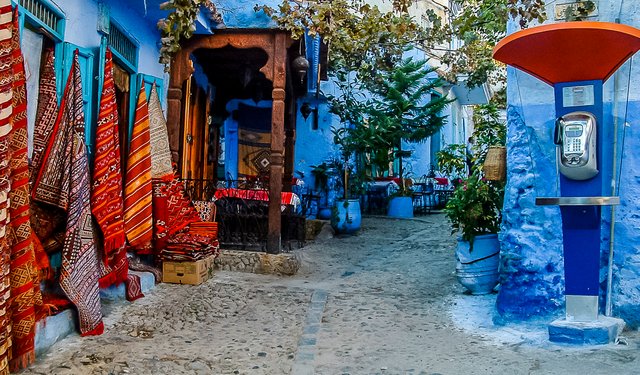
Chefchaouen was founded in 1471 by descendants of the Prophet Mohammed as a stronghold in the fight against the Portuguese. This city has one of the oldest and most interesting medinas I have seen. Here you can find hundreds of workshops where you can buy many different types of handmade crafts. As you walk the medina, you get the sense of being on a small Greek island. Chefchaouen seems to be a world apart from the rest of Morocco and a treasure to steal away an afternoon or two, or three….
I highly recommend this city to anyone traveling in Morocco.
As we made our way back to Tangier, the most unusual arrangement of clouds began to descend over the valley from the hills butting up to the Mediterranean.
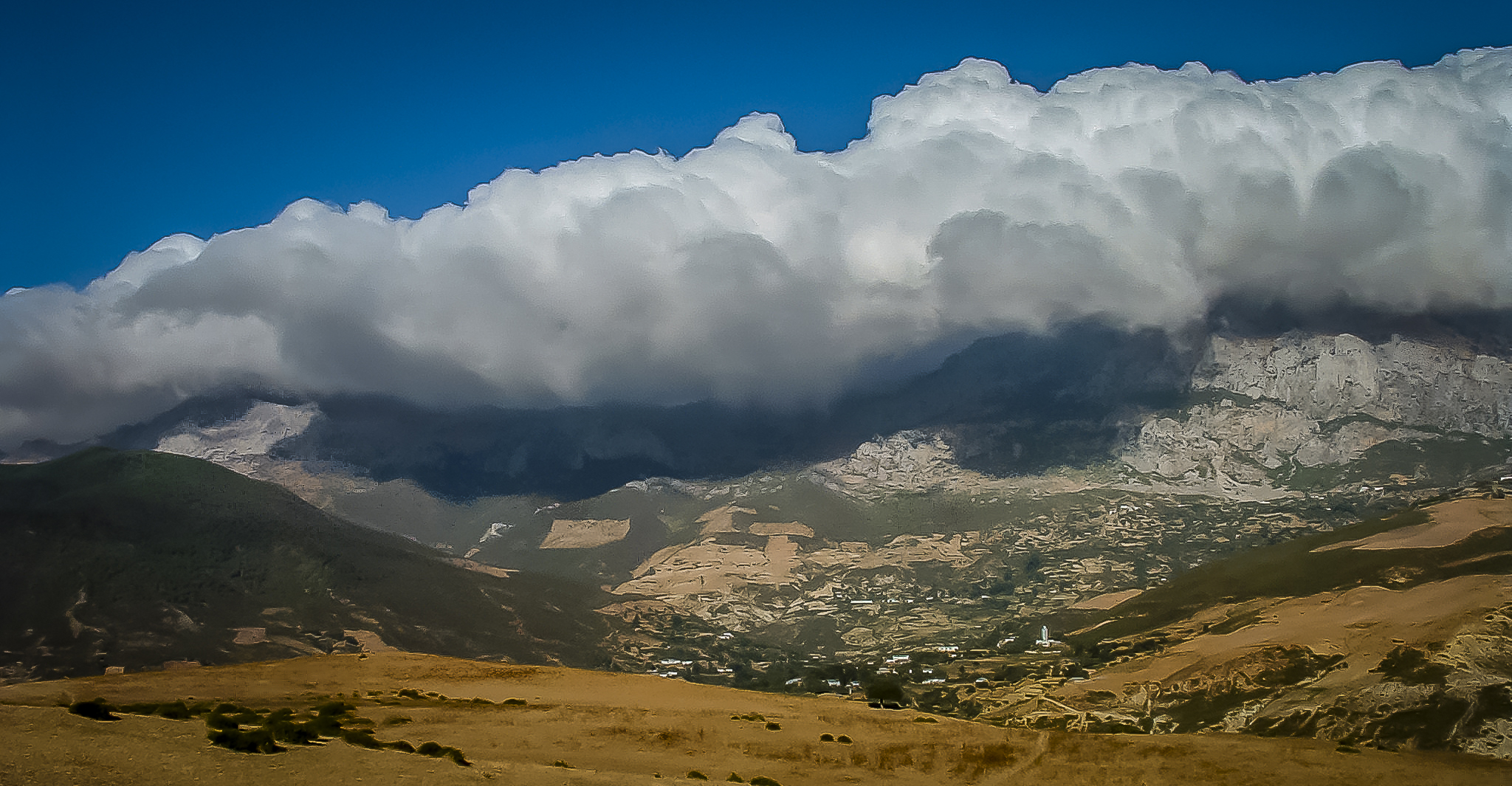
Thursday
Our boats and equipment finally arrived today. They arrived by truck from Casablanca and we spent most of the day unpacking our gear, arranging the containers, and setting up the Nitrox fill station. Tomorrow we plan on putting the boats in the water and getting them ready for diving and remote-sensing.
Project boats consist of 2 RIB boats that will be used for diving, 6m Venus and the 8.5m Hercules, there is also the 8.2m remote-sensing vessel, Juno which will be running a multi-bean sonar for the survey. All three boats belong to RPM Nautical and are here to support the project.
We hope to hit the water on Saturday or Sunday. The first series of dives will consist of training and orientation dives to get everyone comfortable with local conditions and equipment.
For the next few days, our day-to-day operations are pretty straightforward. We need to get all of our equipment set up and ready for use. The remote-sensing team can start as soon as they get the equipment on Juno ready to go. We are still waiting for the Moroccan divers to arrive but we were told they would be here in the next few days.
Saturday
We were not able to take the boats out today due to high winds and because of more red tape. So, we spent the day filling our 20 nitrox tanks and setting up additional equipment on Juno. If the winds cooperate, we will try to conduct our training dives tomorrow. If all goes well, we will be on site Monday morning.
I have never been so jealous of a fill station in my life. Everything was brand new and built to order. One of the containers contained the entire fill station including a large generator that could power a small compound.
It takes roughly 20 minutes to fill 5 tanks but since we had to learn how the system worked, it took us about 2 1/2 hours to fill all 20 tanks. Not that exciting but interesting nonetheless.
Sunday
Again we were put off from diving today. More hands need to be greased before we are going to be allowed to start. Hopefully tomorrow we will head out. In the meantime, we began the task of setting up our survey lanes for the multi-beam survey.
Monday
Today was the day. We were finally able to go out and conduct our orientation dives. We choose a location that was somewhat sheltered and fairly shallow. This would allow the dive team to get familiar with the environment. We need to prepare for the cold water, high currents, and new equipment before we dive on any deeper sites.
On the way out, we took notice of Jbel Musa to the east. It is easy to understand why many believe this feature, as opposed to Ceuta, is the southern guardian.

Once on location, the first team hit the water. We knew the water was going to be cold based on our orientation dives, and in fact, it was at 62°F. We were all wearing 8mm full body wetsuits with 3mm vested hoods. We also had 3mm gloves and booties.
I was on the second dive and with all the neoprene I was wearing and the high current, I wore 28 lbs. of lead to get down and stay down. I have never needed that much weight in my life. I thought for sure I would sink like a stone but I didn't because of the current. The surge was so strong that I need to periodically grab hold of a rock to stay in place as the surge went past and then let go to get pushed in the direction I wanted to go. You really needed to kick to get anywhere.
The visibility was also very poor. It reminded me more of my local lake than the Ocean. We only had about 6 feet of visibility but there was not much to see anyway. During today's dives, I saw only one, 3" stone fish and a few smaller fish. The most interesting thing to see was sea anemones. Still, we were glad to have finally gotten wet.
Tomorrow we will actually be on one of the sites we plan to investigate. Hopefully, the weather will be as calm as today and we can get some work done.
Wednesday
For the past couple of days, we have been able to dive to some extent. We tried to dive on a Roman anchorage site yesterday, but as soon as divers hit the water the current swept them to the stern of Hercules or the bow of Venus which was tied aft of Hercules. As they tried to swim back to the anchor line we immediately recognized the difficulties that we would face diving this location. The currents were running hard and a couple of the Moroccan divers got sea sick so we had to quit early.
Today was a little better, however, but we did not dive the anchorage site. Since we started the multi-beam sonar survey, we didn't want diving to impede that work. Our remote-sensing specialist is only with us a short while and there is a lot to do so it took priority. The dive team decided to dive another site in hopes of finding a reported wreck. We were given coordinates from a member of the Moroccan Navy and told there was a shipwreck in the area carrying lead ingots. Again, the currents were very strong so we decided that my team would go in first and evaluate the conditions. Because of the currents, I opted to use a pair of Cressi-sub free diving fins with 2.5 feet blades. I hoped this would give me the additional power to cut through the water. In fact, it did and we were able to complete a dive to 54 feet for 20 minutes. The sea floor in the area did not revile anything. We did a couple of circle searches but nothing was found. By the looks of the ripples on the sand's surface, it is apparent this is a very dynamic area. The possibility of finding anything would be remote unless a more extensive survey using a magnetometer to pinpoint magnetic anomalies were undertaken. Anything existing in this location would be covered up by now.
Once we surfaced we decided to take the remaining divers to a more sheltered location for continued orientation dives.
Now we were in 25 feet of water and looking for another, more modern shipwreck which might be of interest. The dive team went in and was able to find the remains of a WWII landing craft along with Jeep remains and rubber tires. They spent roughly half an hour investigating the remains before returning to the surface. All were very excited about the dive and ready to go again. What they did not know was that during their dive surface conditions had deteriorated dramatically. It was decided immediately to call it a day and head for port. As we made our way, the winds really picked up. We were pounded by the waves all the way back.
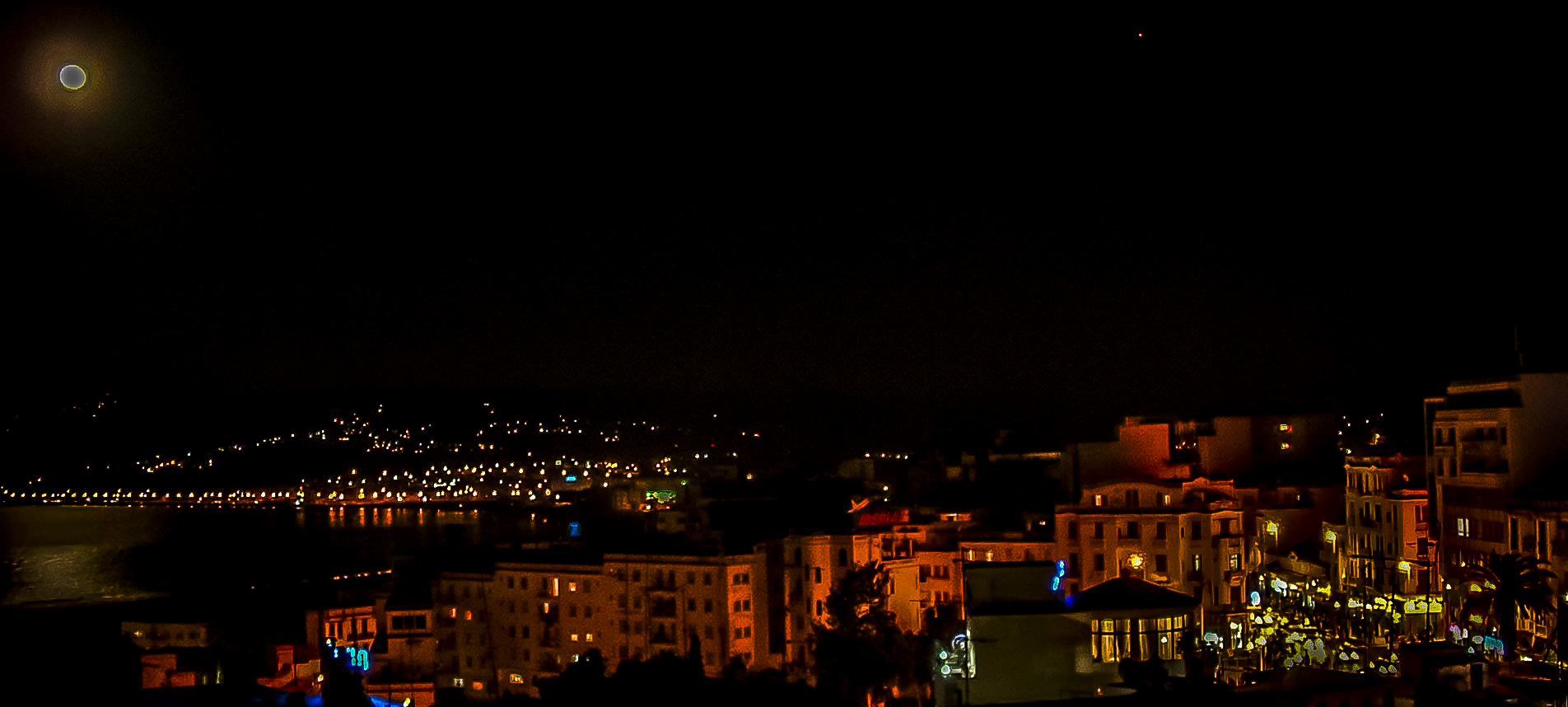
Friday
For the past few days, we took advantage of the calm seas in the mornings to arrive on site as early as possible. Today, I joined the survey team onboard Juno. Since diving is so difficult we are we are focusing more on the multi-beam survey since the data will be invaluable now and in the future, it is the most important piece of the project. The remote-sensing operator leaves next Tuesday so the survey as well some video work need to be completed by then.
Today, the survey started around 7:45 am and we immediately put the multi-beam to work. The first step was to input certain variations dealing with tidal fluctuations and current water conditions into the survey computer. This would allow both the multi-beam and side-scan sonar to produce better data.
Once the survey system was set we were ready to roll.
What really amazed me today is the captain of Juno. It is no easier feat to keep the boat moving in a straight line while the seas are rocking the boat from side to side and front to back. He did an amazing job.
Another part of this project is to use a deep water drop video cameras and record known features. There is supposedly a shipwreck that is deeper than we are set up to dive and the project team wants to record it using these drop cameras. This system allows for the cameras to be dropped over the side and lowered down to record. There are 3 lasers in the center which are used for positioning in the water as well as providing scale.
The data we are collecting is pretty cool I will admit. You can see very precise underwater features as well as 3D bathymetric data in real time as well as over a period of time. Anyway, I won't bore you with the nitty-gritty details but suffice it to say I am enjoying the learning experience.
Hopefully, we can finish up the multi-beam survey tomorrow morning if the weather holds and then start the drop camera survey Sunday. Once these tasks are complete, we can again focus on diving.
Tuesday
We did finish the multi-beam survey on Saturday and tried to start the drop camera survey Sunday morning. But, because we never received the coordinates for the deep water shipwreck site, we decided to conduct the drop camera survey over the Roman anchorage site. The idea was to tie Venus to the stern of Juno and have the camera lowered off the bow of Venus which would then conduct semi-circle swaths back and forth behind Juno. Because Venus would be tied to Juno and geared in reverse, Venus should have made a natural progression in the direction we need depending on steering. But because of the current, Venus could not complete its path and we had to halt the survey. Since today was our operators last day, we will not be able to complete the camera survey.
Friday
We have not been able to go out for the past few days due to weather. Today was very clear and we thought for sure today would be the day. It was not to be, however. Once we arrived on site, we found 8-10 ft swells running through the area and I thought it best not to put divers in the water due to the logistics of getting each in and out and the problem of doing safety stops in the swells while drifting. That is not something I wanted anyone to deal with so I called the day.
Since we were all geared up and ready to go we decided to go more to the east of Tangier towards the Mediterranean to do additional practice dives. I set up 2 leisurely dives and I think everyone had a good time. At least everyone was relaxed.
Sunday
For the past couple of days, we have been able to get out on the site. Although yesterday was less than perfect with regards to weather, the diving was great. Each diver was able to make 2 dives to around 68 feet for 35 minutes. Water temperature was holding at 66 degrees. During these dives, we started laying out our travel line. As we begin to familiarize ourselves with the site, the travel line will connect various areas and give us a better picture of how it is all arranged.
Today was also a good day. The weather was great and the seas were calm. Unfortunately, we got a very late start and were only able to make one dive each. During this dive, we continued familiarizing ourselves with existing artifacts as well as took note of additional remains. Starting tomorrow, we will begin in earnest to identify additional anchors and their relationship to already identified anchors. This process includes locating new artifacts, labeling them for ease of identification, trilaterating each to three known points, and taking dimensional measurements of each. This information will give the team the data needed to continue its research.
Wednesday
Today we took the day off and a few of us decided to take a tour of northern Morocco. I still needed to buy some souvenirs and this would be the perfect day. Starting early, we headed out of Tangier towards Ceuta past Jbel Musa. We didn't want to cross the bridge and actually go to the Spanish island this time but merely wanted to see the countryside between the two cities. After taking a few photos, we headed off towards Tétouan. Tétouan is a resort town southeast of Tangier and is aimed at Western Europeans. We were only able to stay in Tétouan for an hour or so because we were followed the entire time by a "guy" on a motorcycle who spoke perfect English and wanted to be our "friend." He followed us everywhere and wanted us to hire him as our personal tour guide. He had many other "friends" as well who owned shops where we could get great "deals." We literally felt like we were being stalked so we decided to head out of town to get rid of him. We did stop by a roadside market and bought some large ceramic bowls and plates to take home. From Tétouan we headed back down to Chefchaouen. As I stated earlier, Chefchaouen is a great placed and I knew I would come back. Here is where I bought some tapestries, rugs, and other textiles. My options were almost unlimited.
All I can say about Chefchaouen is that it has been and remains my favorite place in northern Morocco. It just doesn't seem to fit with the rest of the country and it makes for a great get away from the pollution that is Tangier. It was one of the few times I really felt like I could catch my breath and relax.
Saturday
Yesterday we went back out to the site to locate, tag, and measure several new anchors. Each diver was able to make 2 dives before the seas forced us off and back to port. Just to give you some idea of what we were looking for I have included a couple of pictures of artifacts recovered last year.
Today we were not as fortunate. The weather had turned against us once again and we were forced to come back almost immediately. We also heard it could remain like this for the next couple of days.
Tuesday
Fortunately, the weather has been cooperating for the past few days and we have been able to dive the site consistently. An interesting note from yesterday, while mapping one of the anchors, I noticed a small octopus who had taken up residence inside an anchor collar. Only his large eyes could be seen sticking out from the top as if wearing it as a crown. It was great to see something a little different considering the few specimens of marine life evident in these waters. It is my understanding that due to overfishing, small fish are few and far between which means larger marine animals have nothing to subsist on so the waters around Tangier and most of Morocco are almost barren. We have been fortunate enough to see a few dolphins near Cap Spartel but other than that, nothing much larger than small stone fish. It is almost like diving on a desert.
Today we had the day off and I decided to walk the medina and up to the Kasbah. In this area, there are narrow streets, gateways, and a seafront promenade looking out towards Tangier Bay and the southern coast of Spain. The Kasbah was built on the site of a Roman settlement with its present appearance dating back to the Portuguese. It is very easy to get lost in the maze of streets and shops but not to worry, eventually, you will come out near the Kasbah or perhaps the port. While in the medina, you are fair game for any shopkeeper or street peddler trying to sell their wares. These men make their living on not taking "NO" for an answer and are very persistent in following you for long periods of time. They hope you will at least give them money to leave you alone. I have learned over the years that if you are simply polite but stern, they will eventually leave you alone.
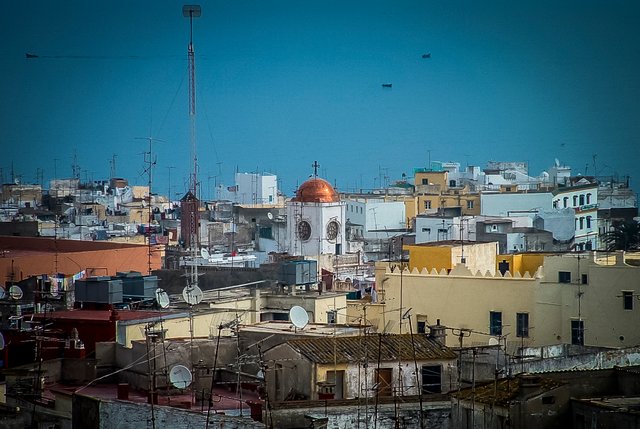
Taking pictures of Moroccans can be dicey, to say the least. Most get upset or at least want some money for their time. I am happy to pay but unfortunately, you never know which want money and which will get angry so I have a tendency to try and be a little stealthy.
Thursday
Today was another bad weather day and we were not able to go out to the site. We were able to go out yesterday, however. We again ran into the small octopus who had moved to another anchor and he was again upset that we were moving a tape measure all around him. I also saw a Brissell worm. I don't have any idea how you spell this but nonetheless, these worms should be avoided.
Saturday
Today was the last day of diving and our last chance to get back out on the site. Unfortunately, we have not been able to get any dives for a few days and today was no exception. As we prepared this morning, conditions appeared favorable. But once we turned the corner at Cap Spartel, we all agreed conditions had deteriorated to the point of calling the dive. Swells were stacking up on each other and the wind was getting stronger. As unfortunate as it was, it was time to go back to port. And, as of today, diving is over.
Starting tomorrow, we will begin to prepare the 2 containers for their trip to Spain and their next project. This includes washing all the dive equipment, making sure it is all dry and packed for transport.
I will be leaving Tangier in a few days going through Casablanca first to catch my departing flights a week from today, and since I have a couple of extra days, I am meeting up with some friends and taking a trip to Fez. This is the one city in all of Morocco I really wanted to visit so I am very excited about getting the chance. Since I will be purely nomadic at that point, I will have to make plans for storing my equipment while I am traveling.
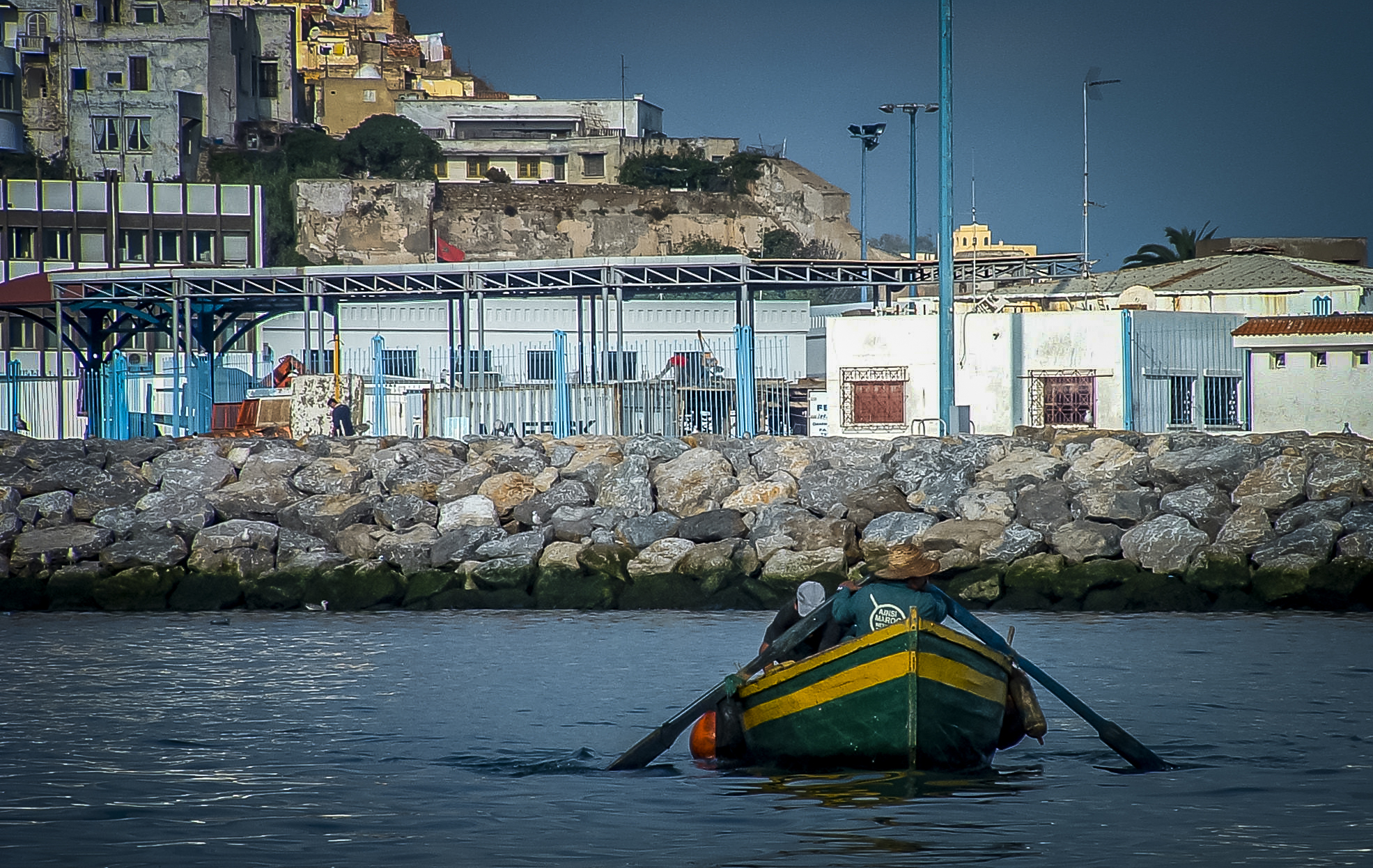
Tuesday
We were able to get all the equipment packed and ready for transport today. This took a great deal of time but because of the commitment of those involved, it was accomplished with little stress or difficulties. Since our work is complete, I have decided to go straight to Fez instead of Casablanca. This way I can spend additional time in Fez before going on to Casablanca to catch my flight home.
I am sure I will look back on this trip very fondly. It was a wonderful experience and because of the team I was working with and the people I met along the way, Morocco will come to be a country I will surely return to soon.
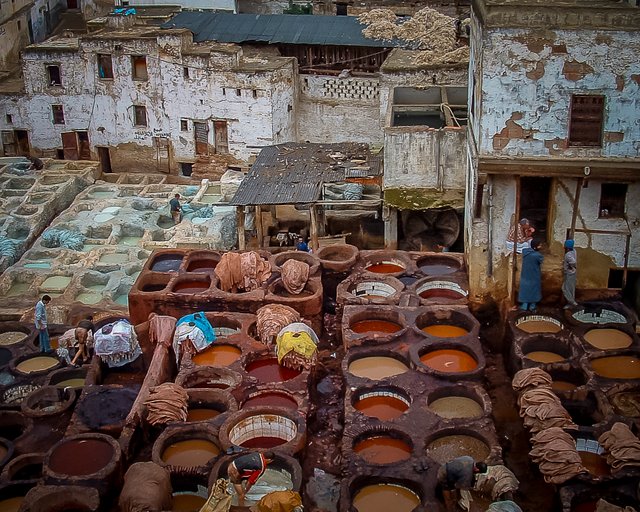
Hi, I just stumbled across your blog, you should try our Upvote service, we have just opened up for registration. Take a look at our lates post. We need more members. 😉
Downvoting a post can decrease pending rewards and make it less visible. Common reasons:
Submit
Hi, I'm happy to see you posting here again!
I notice that this is largely similar to another post of the same name from last March. I went ahead and triggered upvotes anyway, because that earlier post underperformed - massively (in my opinion), but for future reference, it would be helpful to curators if you could indicate when you are reposting older content.
If you do start producing new/original content for Steem again, please feel welcome to participate in the Popular STEM community. I created that when the SteemStem and STEMGeeks moderators all jumped ship. As you can see here, Another experiment advertising Steemit on Facebook, I'm playing around with Facebook advertising to try to build an audience for that community. It would be great to have you participating there.
Downvoting a post can decrease pending rewards and make it less visible. Common reasons:
Submit